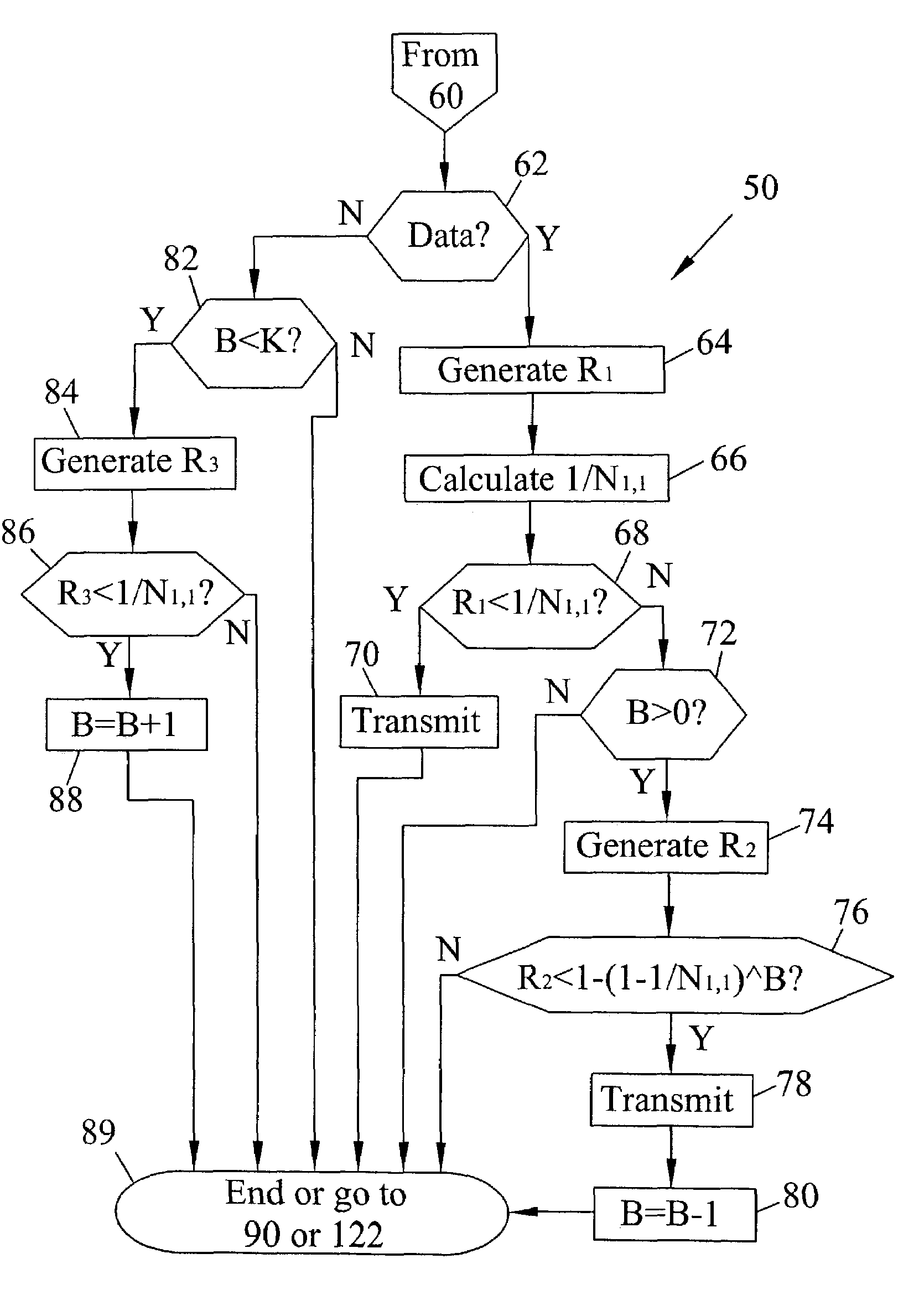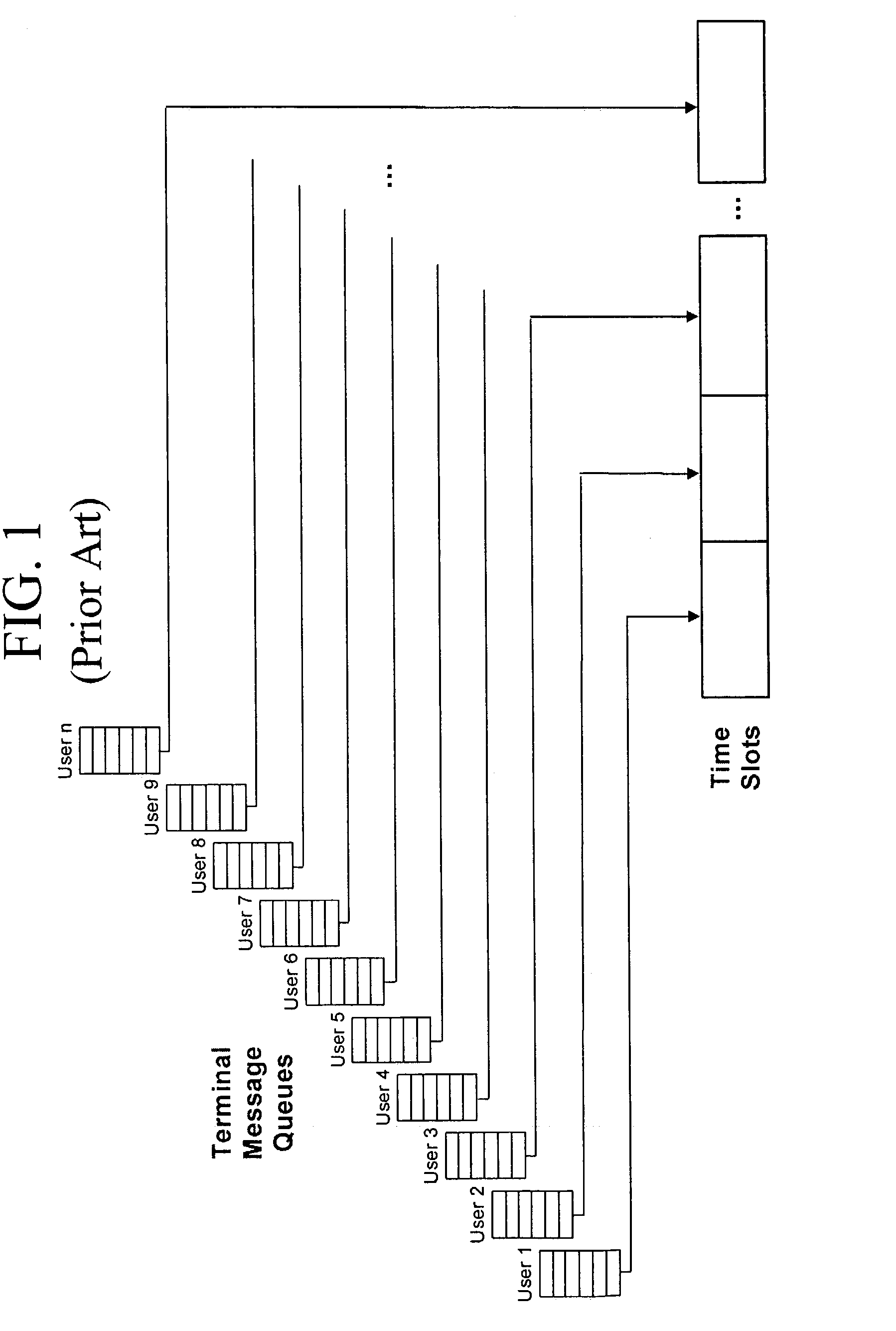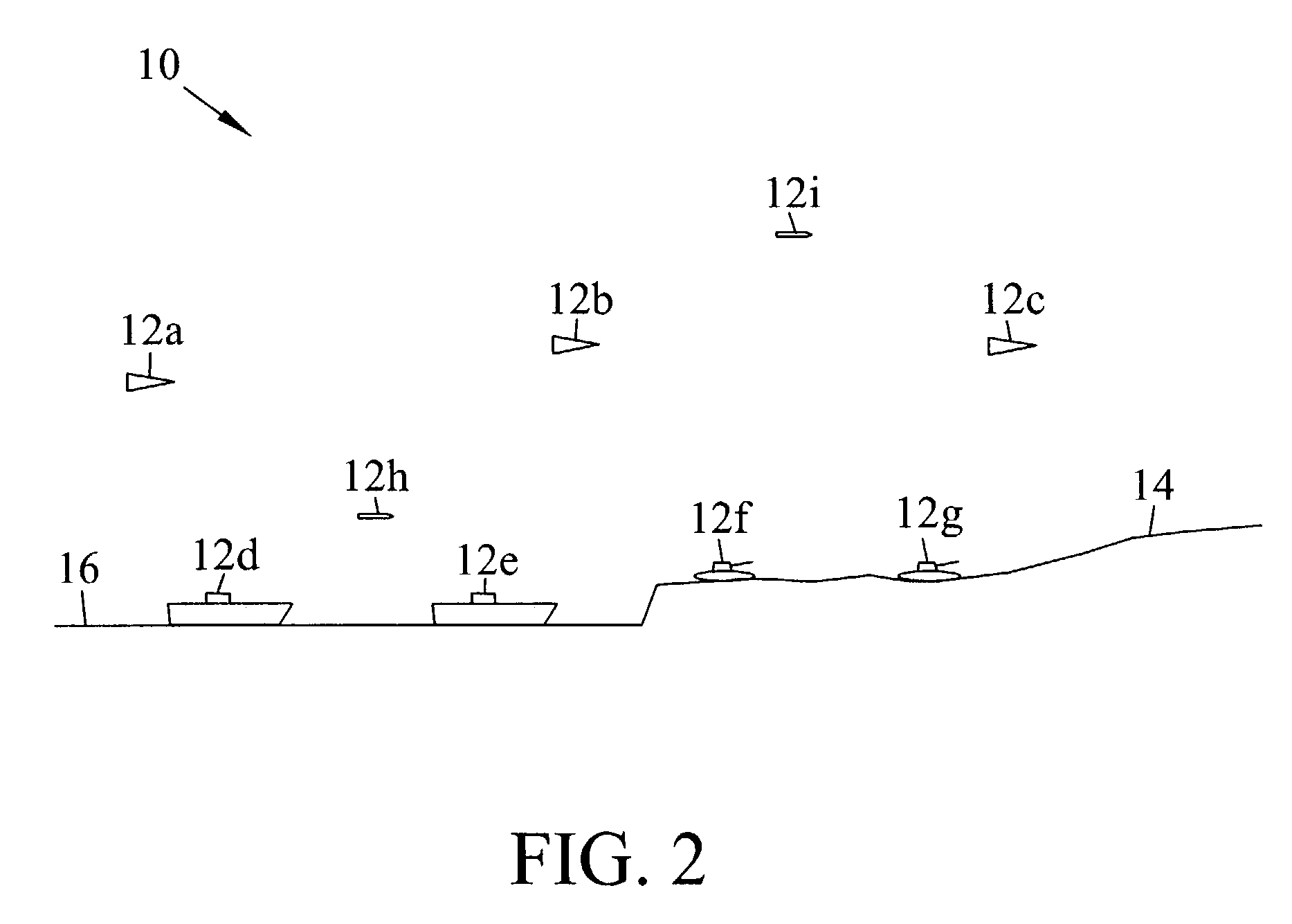Stochastic unified multiple access to a communications channel
a communication channel and multi-access technology, applied in the field of st, can solve the problems of inability to efficiently accommodate users' fluctuating transmission needs. , to achieve the effect of reducing the number of simultaneous transmissions
- Summary
- Abstract
- Description
- Claims
- Application Information
AI Technical Summary
Benefits of technology
Problems solved by technology
Method used
Image
Examples
Embodiment Construction
[0037]The nature, objectives, and advantages of the invention will become more apparent to those skilled in the art after considering the following detailed description in connection with the accompanying drawings. The invention may also be referred to as the Stochastic Unified Multiple Access (SHUMA) protocol.
I. OVERVIEW
[0038]An illustrative example of the invention is a distributed multiple access protocol that is simple, robust, and scalable. This example of the invention may support dynamic entries and exits, and may operate independently of the network topology. This example of the invention also supports the fair, statistical sharing of a channel by the users regardless of the stochastic nature of users' traffic. Aspects of the invention complement the inherent limitations of communications protocols such as Link-16, including the error-prone RF channel, capture, high user mobility, line-of-sight RF communication, and the large geographical area. This example of the invention ...
PUM
 Login to View More
Login to View More Abstract
Description
Claims
Application Information
 Login to View More
Login to View More - R&D
- Intellectual Property
- Life Sciences
- Materials
- Tech Scout
- Unparalleled Data Quality
- Higher Quality Content
- 60% Fewer Hallucinations
Browse by: Latest US Patents, China's latest patents, Technical Efficacy Thesaurus, Application Domain, Technology Topic, Popular Technical Reports.
© 2025 PatSnap. All rights reserved.Legal|Privacy policy|Modern Slavery Act Transparency Statement|Sitemap|About US| Contact US: help@patsnap.com



